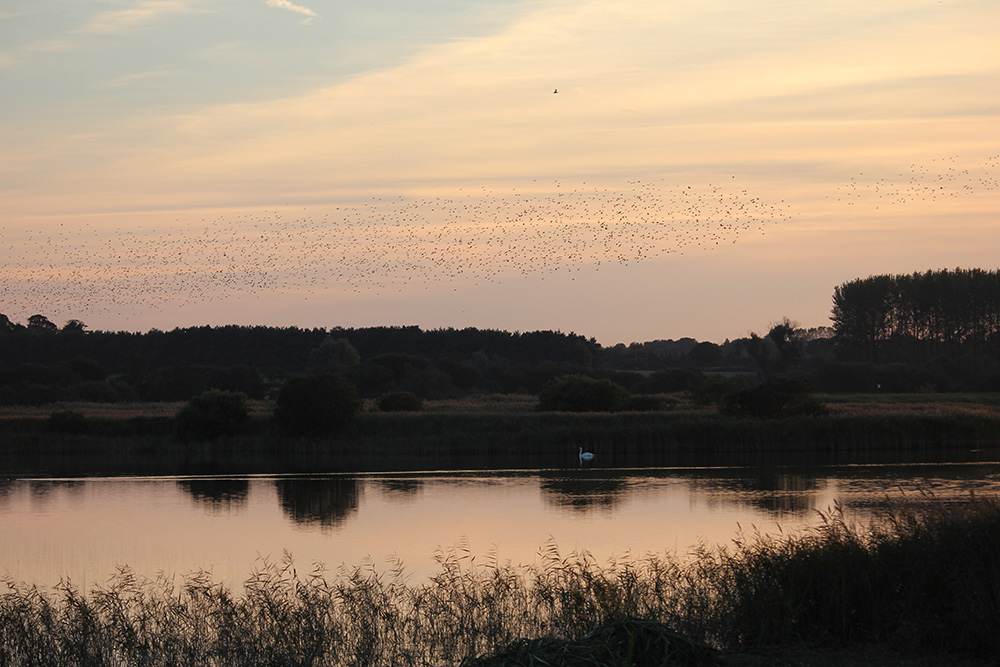‘Stop, stop, stop!’ I shouted. ‘I think I saw one!’ S swerved off the single track road and killed the engine. I’d already grabbed the camera and opened the passenger door. Then – bent double – ran back the way we’d come. I found a spot shielded by bushes and peered into the silver birch forest. Even the birds were quiet. Damn. Had I imagined movement? After all we’d just come from the place that was supposed to be best for sightings, and seen nothing there.
Keeping low I changed position so that I could see more of the forest, then made out a whitish heart-shaped patch the size of a dinner plate. Rich russet brown surrounded the white fur and a short tail intruded into the white rump. A dark line ran from her tail up along her spine towards her motionless head. She was breathing hard. Her nostrils flared and her body rocked with each in-breath. Her beautiful round eyes framed with long eyelashes were wide open.
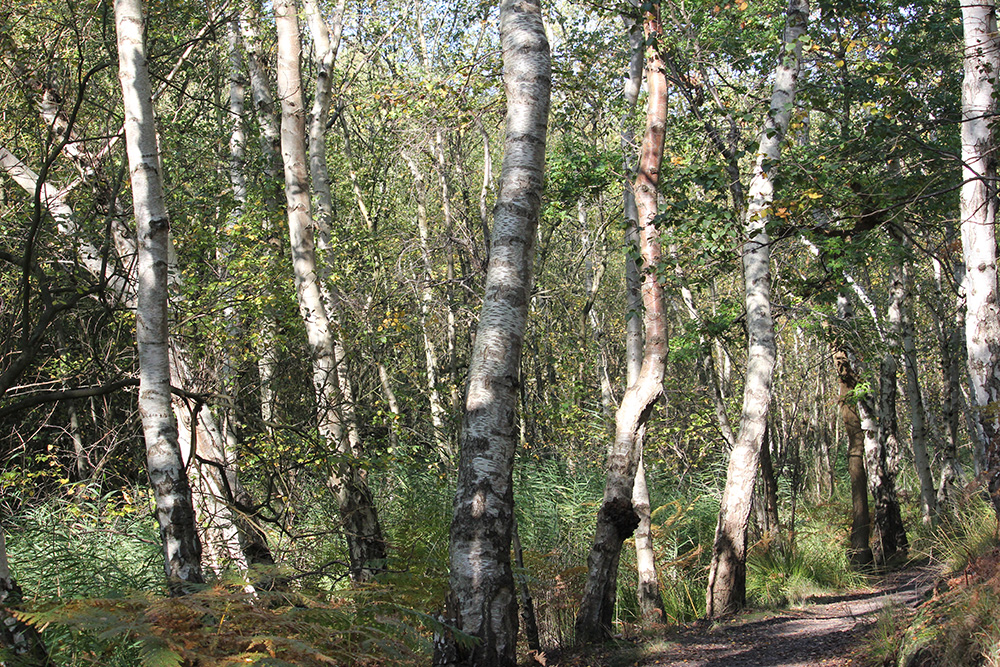
Slowly I raised the camera but her haunches tensed. She bounded away surprisingly quietly, gracefully zig-zagging between white tree trunks. I was left wondering if she’d been on her own or whether countless eyes had observed my clumsy emergence from the car. As if in answer to that thought, there was a distant bellowing, reminiscent of a large animal with bad belly ache. We’d pretty much given up hope of seeing large wildlife that morning so the fleeting glimpse and that bellow were pleasing.
So – here’s a question: if you wanted to see Red Deer rut where would you go? My first thought would have been Scotland but we weren’t in Scotland. We were close to the Suffolk coast where reserves owned by the RSPB, the National Trust and Sizewell nuclear power station allow plenty of space for animals large and small. Here are not only the pine-dotted grazing grounds favoured by nightjars and Dartford warblers, but also marshes and sand dunes and – an unexpected delight – silver birch forests. I’d imagined the Suffolk coast would be treeless.
We’d just left wonderful rolling lowland heath described as sandlings where the yellow of the gorse contrasted with the pink and purple of the heather. It was late October and storm-clouds were scudding across the sky but keeping their wetness to themselves. We decided now to head for the saltmarshes on foot.
We chose a path that tacked between reeds and rushes and was noisy with birds. This part of the reserve is famous for bitterns but as I pricked up my ears and scanned the reeds I knew there was little hope of spotting such a shy bird. There could be hundreds hidden amongst the thick swishing greenness.
The path took us to a high hide where we felt under-dressed with our one small pair of binoculars between the two of us. Proper naturalists and birders have telescopes and tripods and huge binoculars and cameras with enormous telephoto lenses. Ill-equipped as we were we sat enjoying the tranquillity.
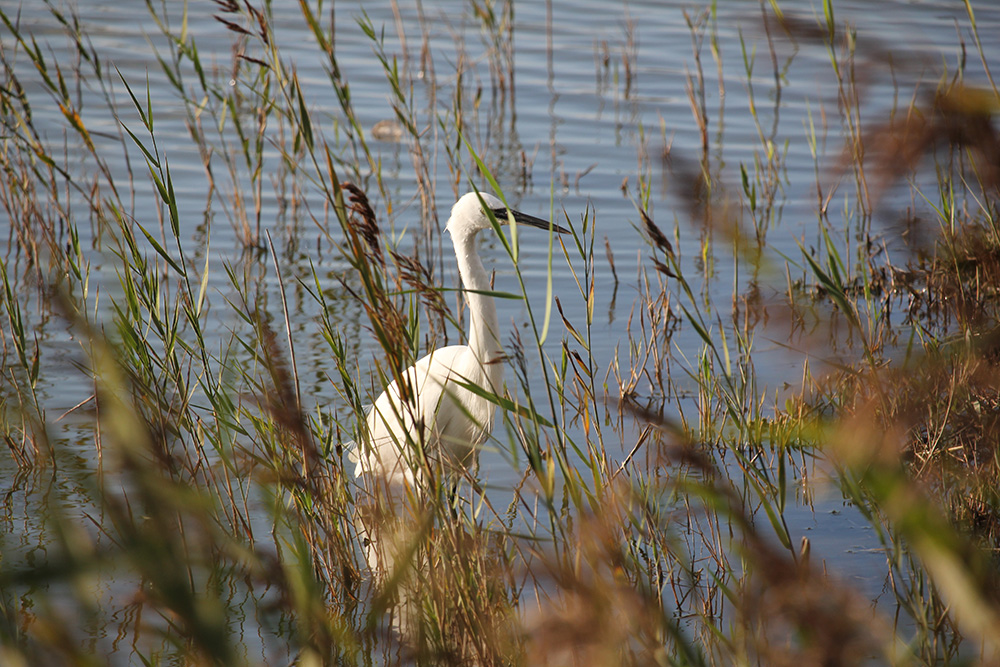
The hide allowed a magnificent view out across the reedbeds to a winding grassy bund that separated tidal from brackish water. A couple of snowy white egrets were fussily picking around in the mud beneath the hide. A large raptor appeared from nowhere and systematically worked the reeds, tacking back and forth, swooping down once in a while. As the birders’ cameras clicked frenetically, I realised this was a hen harrier – a handsome deep chestnut bird with a white head.
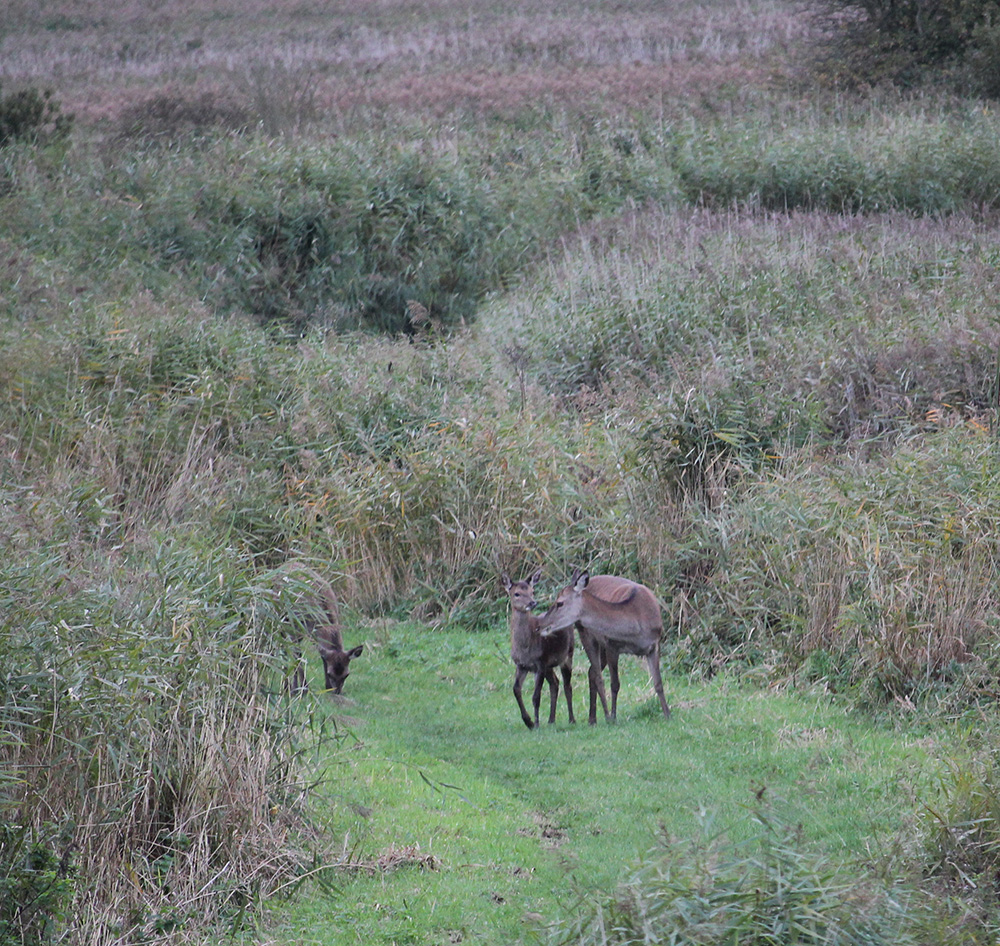
Then there was movement on the grass bund. Slowly a magnificent Red Deer hind wandered into view. She progressed towards us on the bund cropping the luscious grass. Another, much smaller, a yearling I assumed, appeared behind her. Two more emerged and the four continued grazing unperturbed by their audience. I just watched, soaking up the scene, thinking what a great day we’d had when I registered different activity at the edge of the reedbed. The cause of the disturbance was speckled. A head attached to a long neck poked out, followed by the rest of the bittern – the first I’d ever seen. The bird stalked about, poking into the grass for a while, then after posing for photos with the red deer, took off and flew right across in front of us in the hide, at eye level.
It wasn't until a little later that S finally spotted some antlers...
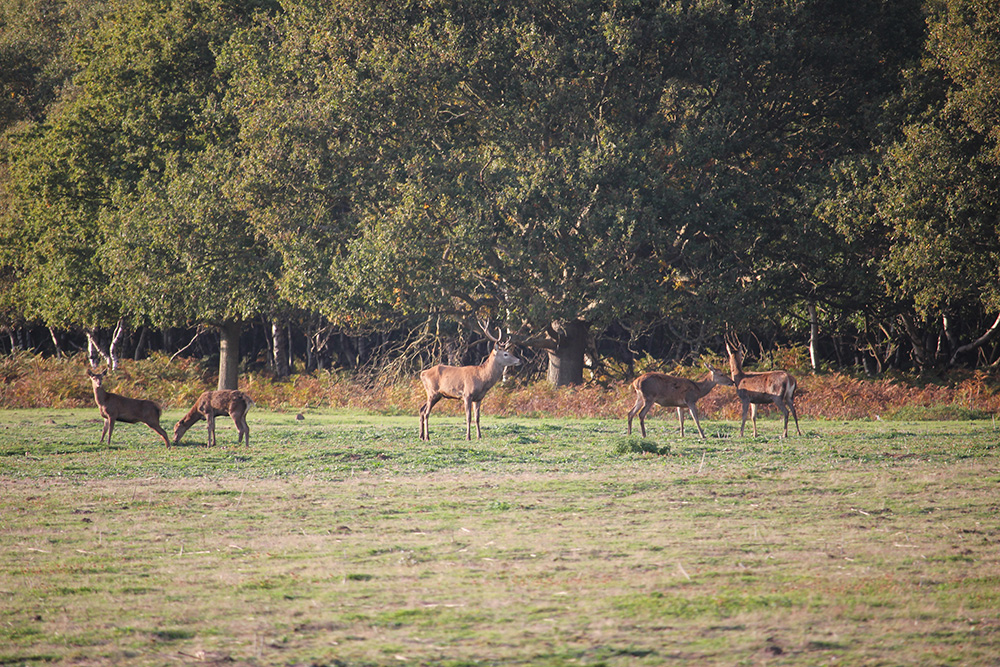
An exhausted-looking stag stood amongst his harem, keeping watch as they grazed at the forest edge. The low sun made them look golden. He’d clearly fought hard for his harts. Fighting off other suitors. Too busy to eat. There was very little muscle left in his rump, and his spine showed. The rut was over. I hoped the sex had been worth it.
Even at this point, Nature wasn’t finished with putting on her best display for us. As we happily wandered back and up towards the road the sky grew rosy and thousands of birds that had been feeding in the reedbeds grew noisy and restless. Flocks flew in, circled merged, gyrated and swarmed. Others rose up from the reeds. Yet others joined in and swirled and undulated seemingly celebrating the end of another wonderful day.
What a pity that we humans can’t murmurate.
